School Funding Proposal Samples
-
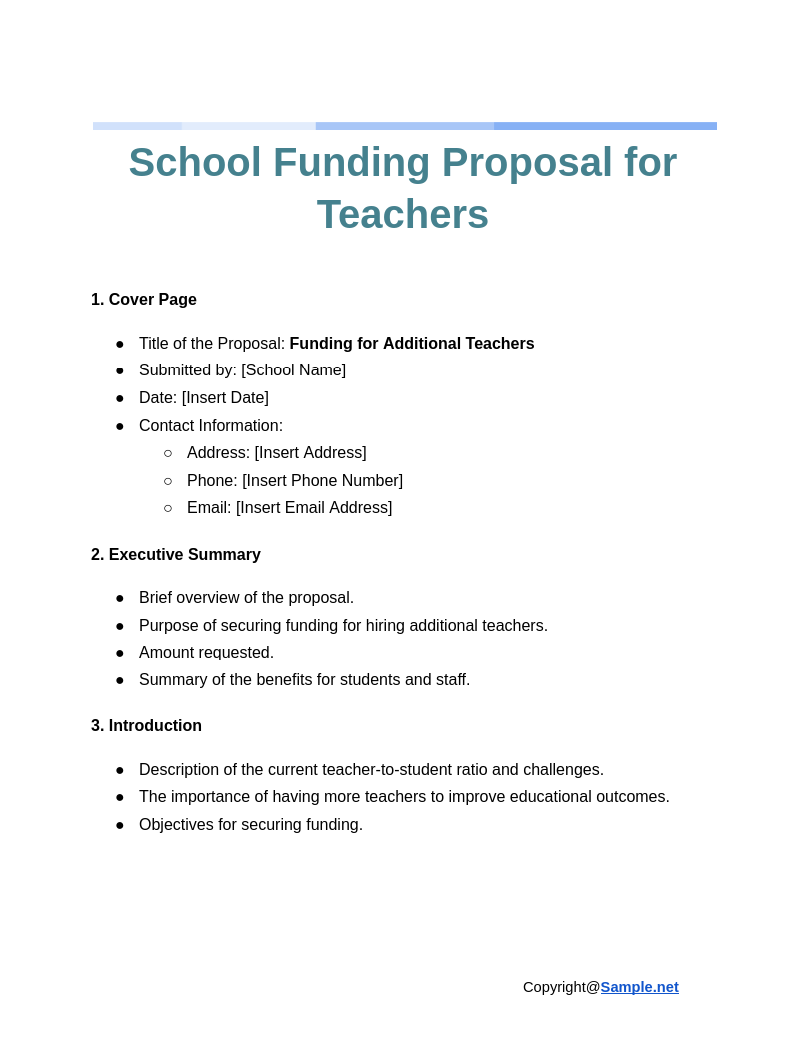
School Funding Proposal for Teachers
download now -
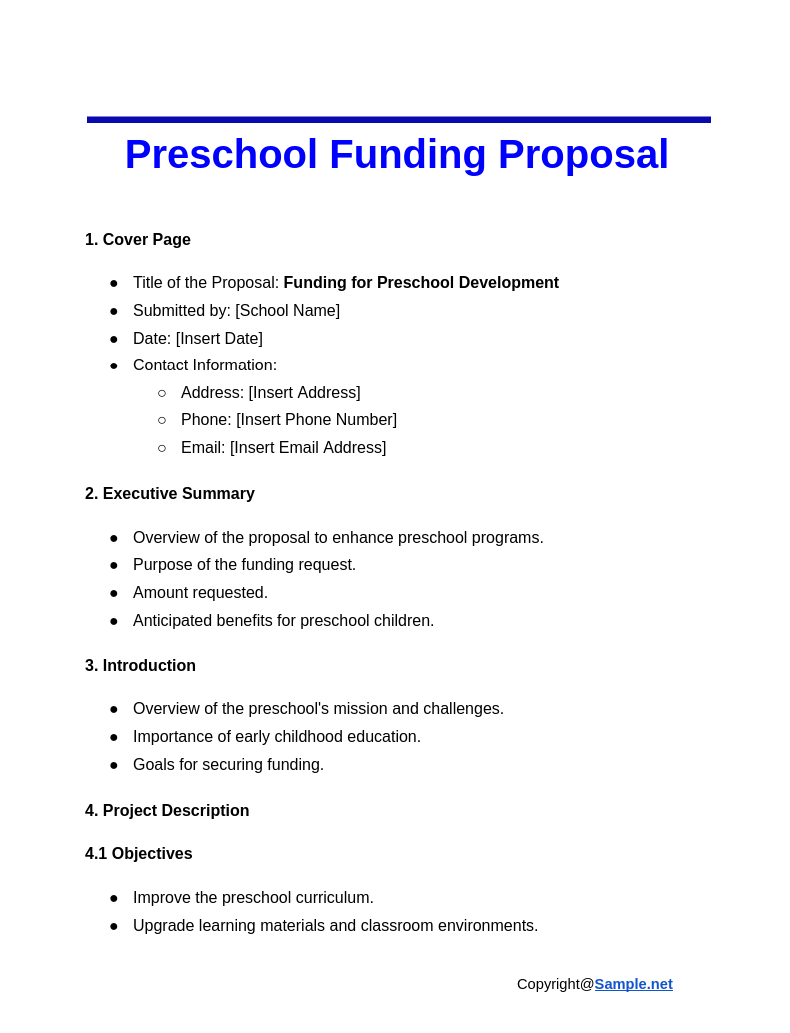
Preschool Funding Project Proposal
download now -
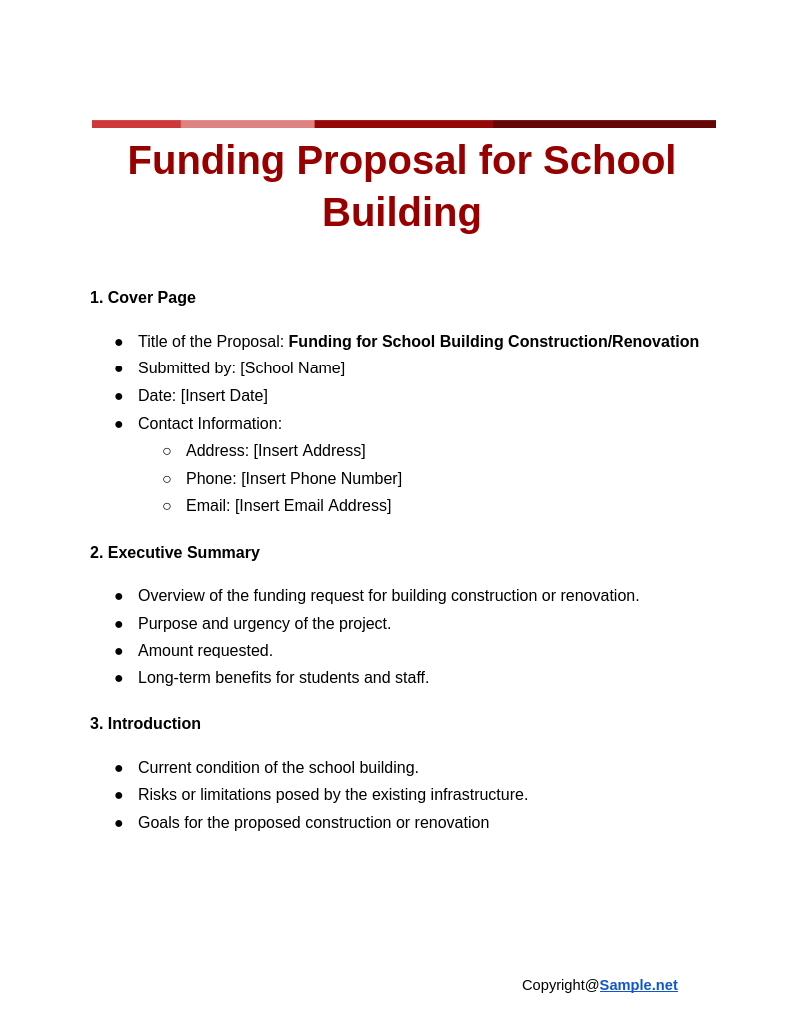
Funding Proposal for School Building
download now -
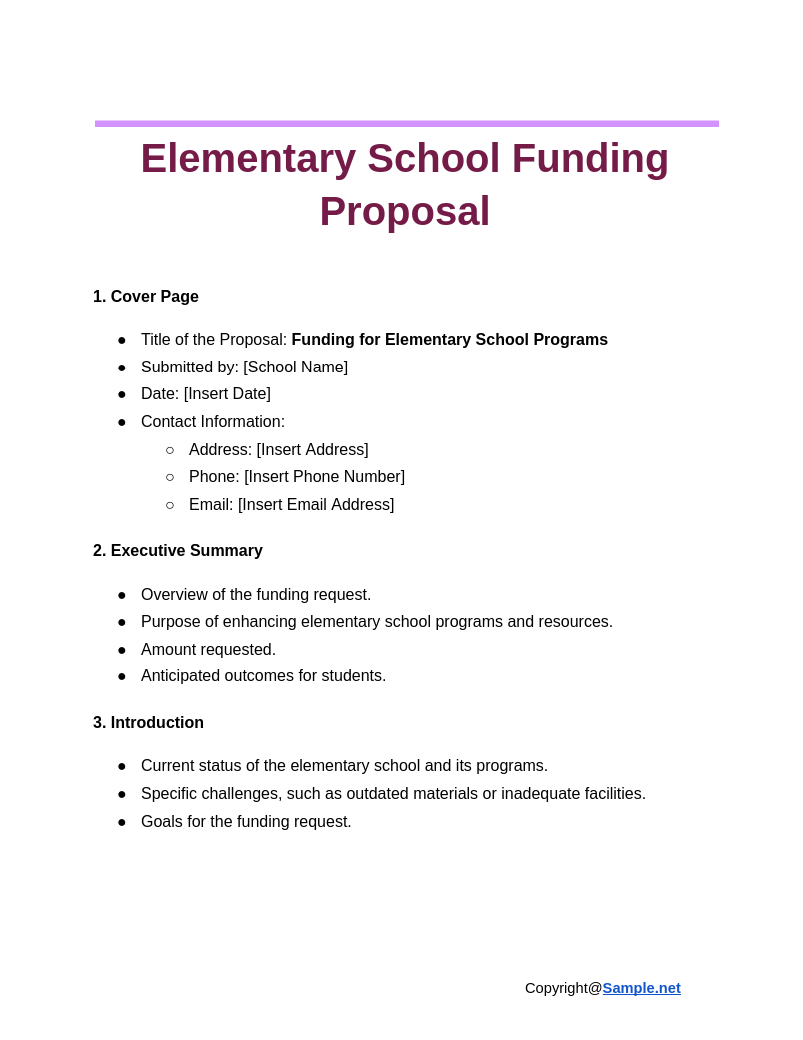
Elementary School Funding Proposal
download now -
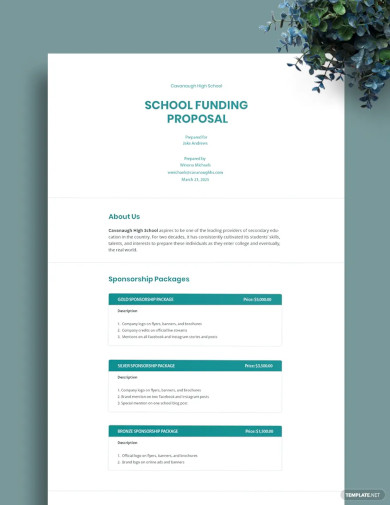
Free School Funding Proposal Template
download now -
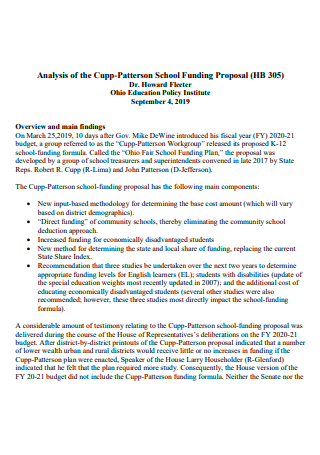
School Funding Proposal Template
download now -

School Grant Funding Proposal
download now -
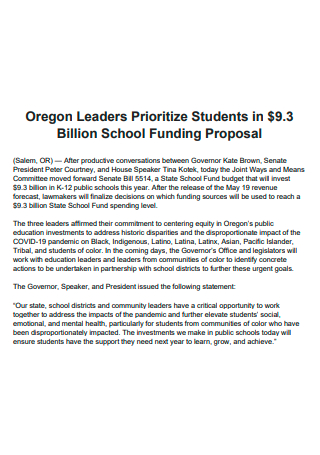
Billion School Funding Proposal
download now -
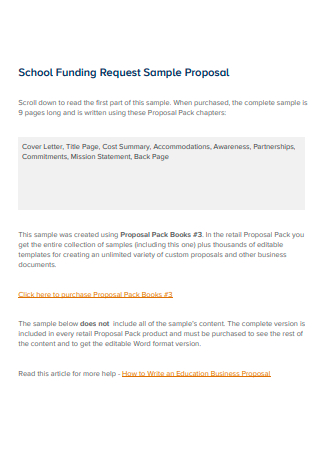
Sample School Funding Proposal
download now -
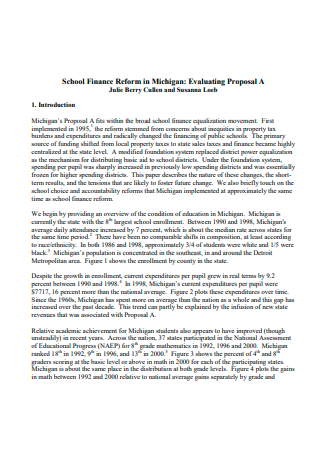
School Funding Proposal in PDF
download now -
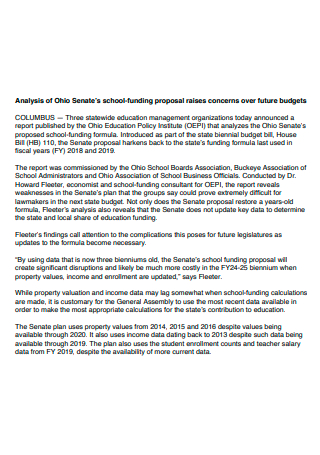
Basic School Funding Proposal
download now -
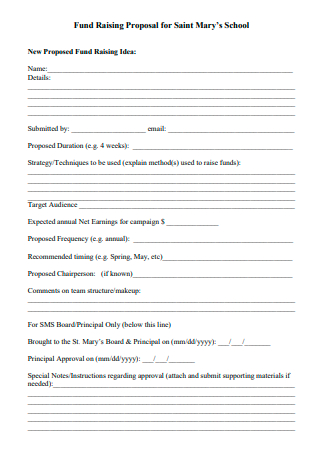
School Fund Raising Proposal
download now -
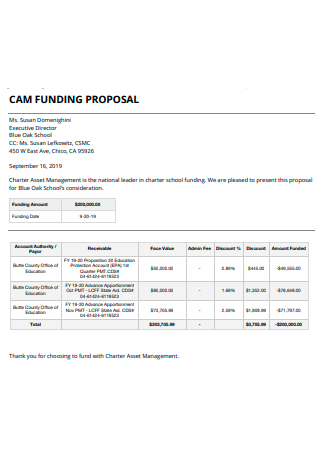
School Funding Proposal Example
download now -
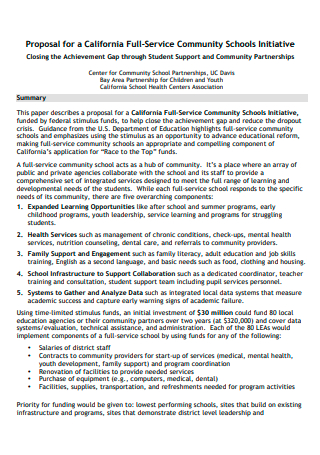
Community School Funding Proposal
download now -
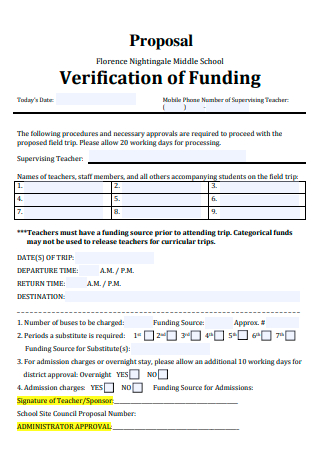
Middle School Verification of Funding Proposal
download now -
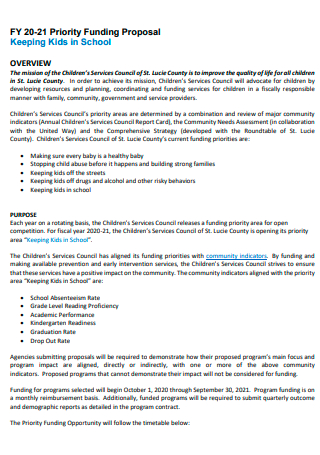
School Priority Funding Proposal
download now -
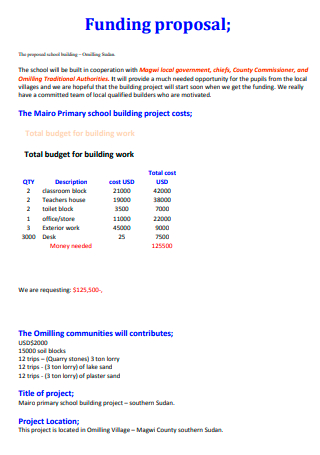
Standard School Funding Proposal
download now -
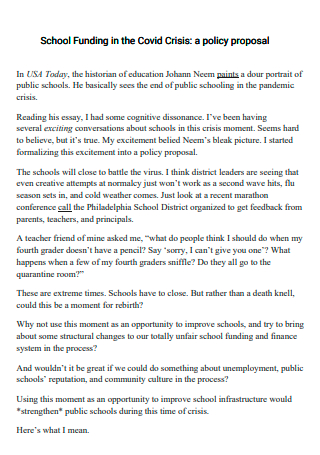
School Funding in Covid Crises Policy Proposal
download now -
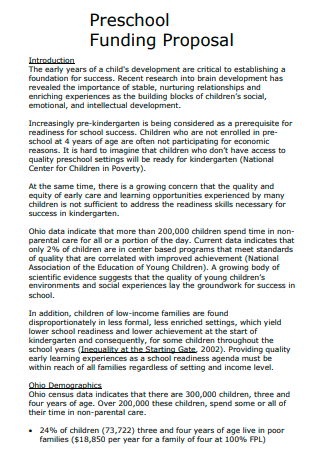
Pre-School Funding Proposal
download now -
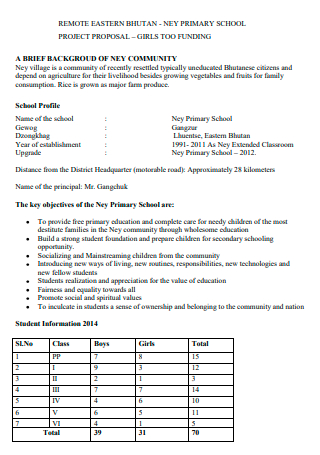
Primary School Funding Project Proposal
download now -
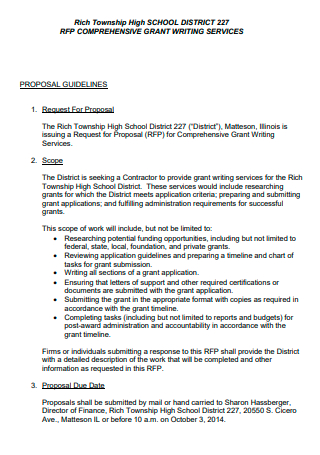
High School District Funding Proposal
download now -
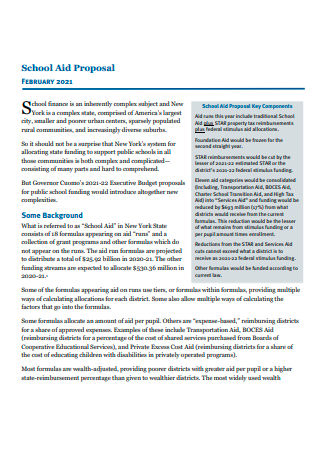
School Funding Aid Proposal
download now -
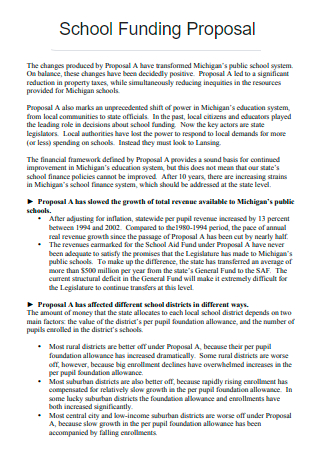
Printable School Funding Proposal
download now -
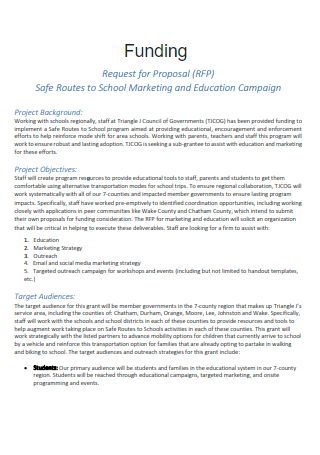
School Marketing and Education Campaign Funding Proposal
download now
FREE School Funding Proposal s to Download
School Funding Proposal Format
School Funding Proposal Samples
What is a School Funding Proposal?
Important Elements of a School Funding Proposal
Purposes of a School Funding Proposal
How to Create a School Funding Proposal
FAQs
Why is school funding essential?
How long does it usually take to write a funding proposal?
In terms of the number of pages, how long should a funding proposal be?
Why is supporting data important in a proposal?
How long should a school funding proposal be?
What are the main components of a school funding proposal?
What challenges are faced during proposal drafting?
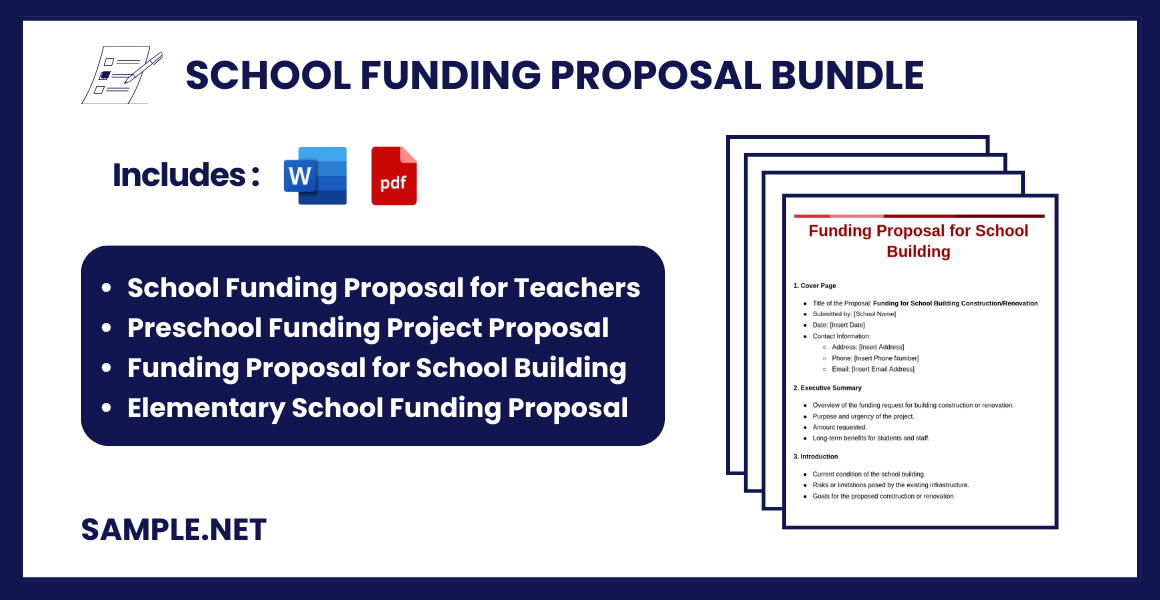
Download School Funding Proposal Bundle
School Funding Proposal Format
1. Cover Page
- Title of the Proposal: [Insert Title]
- Submitted by: [School Name]
- Date: [Insert Date]
- Contact Information:
- Address: [Insert Address]
- Phone: [Insert Phone Number]
- Email: [Insert Email Address]
2. Executive Summary
- Brief overview of the proposal.
- Purpose of the funding.
- Amount requested.
- Summary of anticipated outcomes.
3. Introduction
- Background of the school and its mission.
- Description of the need or problem the funding will address.
- Objectives of the funding request.
4. Project Description
4.1 Objectives
- Clearly define the goals and objectives of the proposed project.
4.2 Activities
- Outline the specific activities or programs the funding will support.
4.3 Timeline
- Provide a timeline of the project, including key milestones.
5. Budget
5.1 Summary
- Total amount requested.
5.2 Breakdown
- Provide a detailed budget, including:
- Personnel Costs
- Equipment or Supplies
- Administrative Costs
- Miscellaneous Costs
6. Impact Assessment
- Explanation of how the funding will benefit the school and its students.
- Anticipated short-term and long-term outcomes.
- Evaluation methods for measuring success.
7. Supporting Documentation
- Attach relevant documents, such as:
- School’s financial statements.
- Letters of support from stakeholders or partners.
- Detailed project plans or blueprints.
- Photos or visuals (if applicable).
8. Conclusion
- Summarize the key points of the proposal.
- Reiterate the importance of the funding and its potential impact.
9. Appendices
- Include any additional documents that support your proposal, such as:
- Research data.
- Case studies.
- Certifications or accreditations.
What is a School Funding Proposal?
A School Funding Proposal is a structured request for financial support tailored to meet specific educational needs. It is often addressed to stakeholders, including government bodies, philanthropic organizations, or private donors, who might be interested in funding educational projects or initiatives. This document provides a comprehensive overview of the funding requirements, how the funds will be utilized, and the expected impact on students, teachers, and the community. You can also see more on School Fee Proposal.
Important Elements of a School Funding Proposal
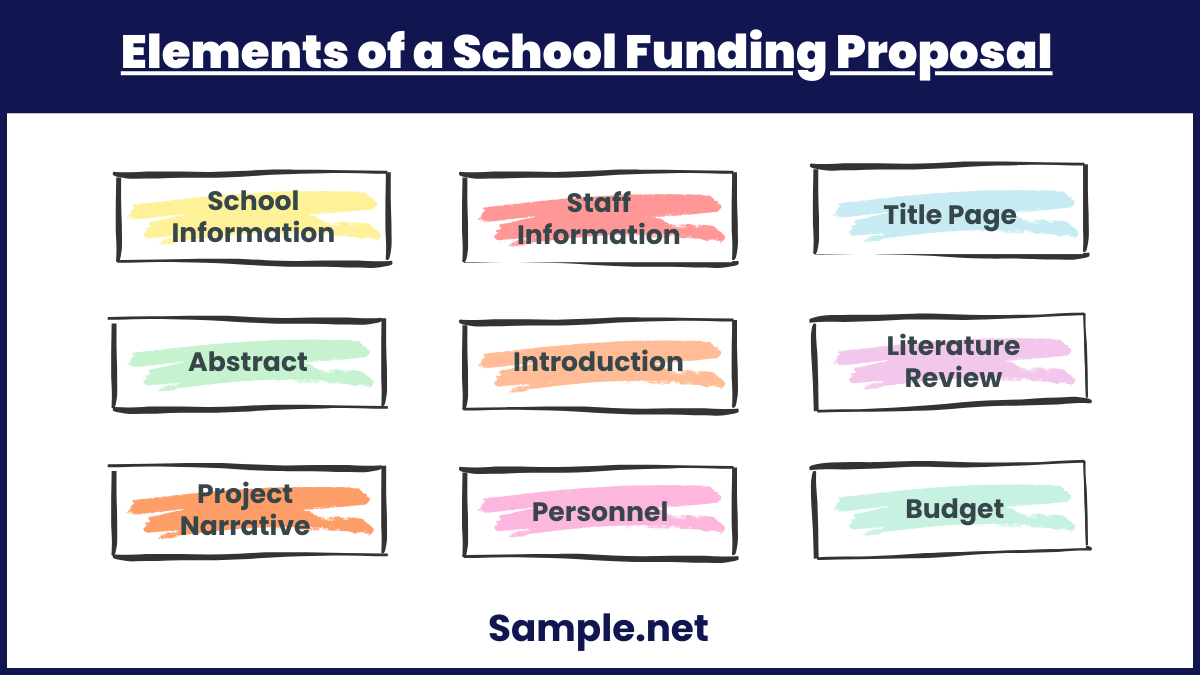
Each school funding proposal will contain different elements depending on a number of factors, such as the type of school, where its location is, and the type of project that needs funding. With that being said, common elements still exist, and they are listed below:
Purposes of a School Funding Proposal
- Secure Financial Resources: To obtain necessary funding for infrastructure, equipment, or programs.
- Support Specific Projects: To finance targeted initiatives such as STEM programs, sports facilities, or scholarships.
- Enhance Educational Quality: To improve student outcomes through better resources or training for teachers.
- Engage Stakeholders: To build relationships with potential donors or organizations interested in supporting education.
- Accountability and Transparency: To demonstrate how funds will be responsibly used. You can also see more on Funding Proposals.
How to Create a School Funding Proposal
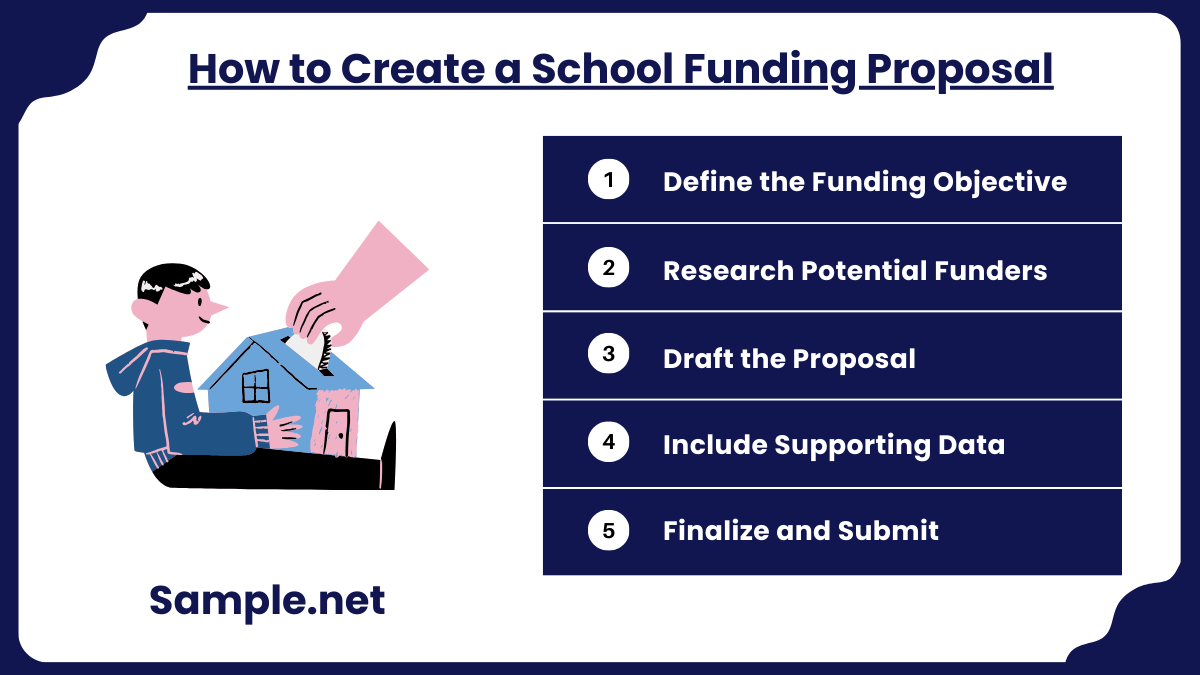
Step 1: Define the Funding Objective
The first step is identifying the exact purpose of the funding. Whether it’s for infrastructure, teacher training, or extracurricular programs, this objective should be clear. Write a concise summary of the school’s need and its significance. Demonstrate the problem and how the funding will address it. For example, if the school needs new computers, explain how outdated technology is affecting student performance. You can also see more on School Budget Proposal.
Step 2: Research Potential Funders
Next, research potential funding sources that align with your objectives. Look into grants, organizations, or individuals likely to support your cause. Tailor your proposal to meet their interests. Include specific details about why this funder is the best match. For instance, if a donor prioritizes STEM, focus your proposal on how the funding will support science and technology projects.
Step 3: Draft the Proposal
Create a compelling proposal structure. Start with an introduction that explains the purpose of the funding. Follow with a detailed description of the school’s needs, the proposed solution, and expected outcomes. Include a financial breakdown to show transparency. Address the funder’s priorities, explaining how their investment will have long-term benefits.
Step 4: Include Supporting Data
Use statistics, case studies, or testimonials to strengthen your argument. Data-backed evidence helps convince funders that your proposal is credible. For instance, you can include student performance metrics, teacher-to-student ratios, or success stories from past initiatives. Make the case that funding will lead to measurable improvements. You can also see more on School Sponsorship Proposal.
Step 5: Finalize and Submit
After drafting, review the proposal for clarity, grammar, and professionalism. Ensure the document aligns with the funder’s guidelines. Attach any required documentation, such as budget sheets or school performance reports. Submit the proposal on time and follow up with the funder to show your dedication and engagement.
A well-prepared School Funding Proposal can unlock opportunities for schools to enhance their resources, improve educational quality, and foster student success. By clearly defining objectives, tailoring content to potential funders, and using supporting data, schools can build compelling cases for funding. Transparency and professionalism in crafting these proposals are key to securing the support needed to achieve educational goals. Whether for infrastructure, technology, or community programs, a strong proposal can make a transformative impact. You can also see more on School Budgets.
FAQs
Why is school funding essential?
School funding is essential because the institutions should offer considerable additional resources to low-income kids. It is more expensive to educate low-income pupils and provide them with a comprehensive education. Furthermore, in order to overcome poverty, low-income pupils require considerable supplementary funding. You can also see more on Fundraising Proposal.
How long does it usually take to write a funding proposal?
When writing a funding proposal, it is important to take as much time as you need since a precise format and set of guidelines must be followed while preparing a proposal. Factor in the research and reasoning required to produce a decent proposal, and you’re looking at hours, days, or even weeks to write a funding proposal if you’re a perfectionist. As a general guideline, you should set aside a week or two to write a funding proposal document. Even if you finish early, it’s always better to have adequate time to cover everything.
In terms of the number of pages, how long should a funding proposal be?
The length of a funding proposal should depend on how complex the issue that the proposal covers and the time dedicated to research it needs. Additionally, the length of the funding proposal depends on the institution that applies for it, such as an art funding proposal or a healthcare funding proposal. You can also see more on Education Program Proposal.
Why is supporting data important in a proposal?
Data demonstrates the school’s needs and highlights the potential impact of the funding, increasing credibility with funders.
How long should a school funding proposal be?
It depends on the funder’s requirements but typically ranges from 3 to 10 pages, including detailed budgets and supporting documents. You can also see more on Student Proposal.
What are the main components of a school funding proposal?
A school funding proposal includes an introduction, description of needs, proposed solutions, budget breakdown, supporting data, and a conclusion. Each section addresses specific funder concerns, ensuring a well-rounded and persuasive document.
What challenges are faced during proposal drafting?
Common challenges include limited data, aligning the proposal with funder priorities, and adhering to submission guidelines. Overcoming these requires thorough preparation and collaboration. You can also see more on Student Activity Proposal.
